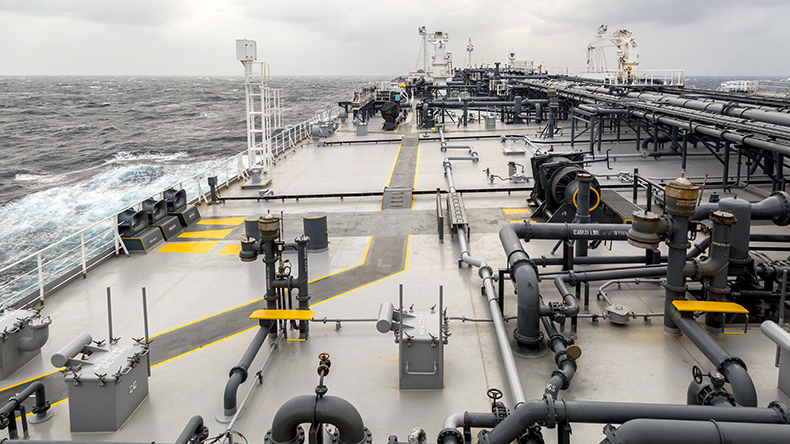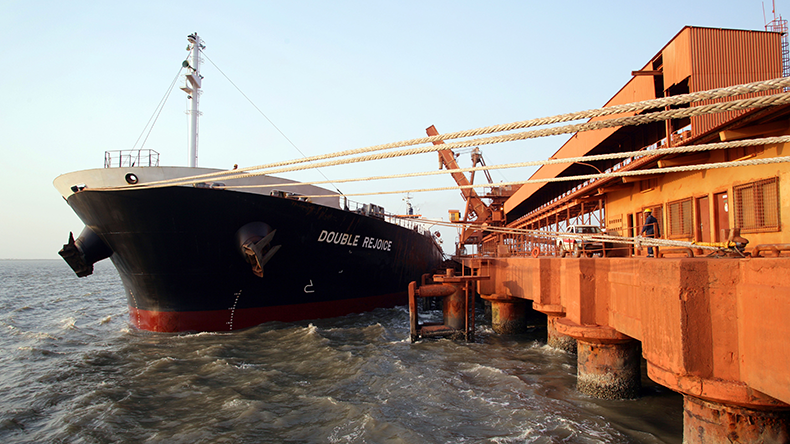Weekly Briefing: No end in sight for box boom | Beijing baulks at bauxite coup | Tankers settle in for more doom and gloom
Lloyd’s List’s weekly headline view of the stories shaping the key shipping markets
Growth of less than 3% a year should not be sending shippers into the arms of bulk carriers (not least for safety reasons), nor should it be sending freight rates to levels where they now threaten the existence of some businesses, but here we are. In dry bulk the analysts have been frantically googling West African politics after a military coup caused concern in Beijing, and some hope in Canberra. Tanker analysts meanwhile have been struggle to find new ways to explain why the market remains moribund.
Containers
Moves by some shippers to secure space for containers on bulk carriers were further called into question this week following the a report of a stow collapse in a repurposed bulker.
With container capacity at a premium, the large holds and decks of bulk carriers have been considered an alternative means of shifting boxes. But with no cell guides and little to secure containers, doing so is risky.
Insurers have warned that while it is possible to use vessels other than boxships for containers, it is not necessarily advisable, and the return to harbour of one bulker does rather confirm their doubts.
Container stacks collapse on ships designed for boxes as well, however, and there were suggestions that an increase in the number of box losses last winter may have been due to fully laden vessels being pressed to route through storms in an effort to maintain schedules may have been partially to blame.
Elsewhere, it was the threat of fires on containerships that came up for scrutiny.
While the size of containerships has increased massively over the past 30 years, the rules governing the safety and training of seafarers have moved on very little, and are no longer fit for purpose.
Fortunately, incidents of this sort remain relatively rare, given the volumes of cargo shifted each year.
The latest figures from Container Trades Statistics showed 104m teu had been shifted in the year to the end of July.
While this represented a growth of 12% over the same period of 2020, when the pandemic was hitting volumes, liftings were up only 5.6% on 2019.
Growth of less than 3% a year should not be sending shippers into the arms of bulk carriers, nor should it be sending freight rates to levels where they now threaten the existence of some businesses.
What is doing this is the shortage of capacity caused by ships and containers being held up by congestion and inland delays.
And the bad news is that the expected normalisation of supply chains is becoming like nuclear fusion: it is 12 months away, and always will be.
Hapag-Lloyd’s Rolf Habben Jansen was the latest to put a dampener on any hopes of an early recovery, saying that the slowdown in returning containers and the delays in ships getting through ports would continue to hold up prices through most of 2022 at least.
Tankers
Adding to the doom surrounding the tanker markets are fresh prognostications that any meaningful recovery in earnings won’t be seen until later in 2022.
The evolving market now reads more like a horror script akin to Game of Thrones. For those who have missed it, read on:
First there was a pandemic that darkened the skies and silenced the earth. Then quickly came a pact among the kingdoms, conspiring against the tanker markets that relied on them for sustenance.
A bleak winter followed. Millions fell ill. The pestilence spread.
When spring arrives the skies remain silent, further quashing hopes and dreams.
Tribes seek sanctuary over summer, too frightened to leave their homes. And — finally — as the leaves are falling off trees the tanker market hears news of another disease in a place far, far away. One that will stop them replenishing vital supplies over the coming harsh, cold winter.
Where does this horror story end for tankers? That part of the script hasn’t been written, but expect some more gloom and doom for a while yet.
Dry Bulk
Given the persistent requirement for dry bulk players to quickly get themselves up to speed on unforeseen macro-economic developments this year, the race to become experts in West African politics is pretty much par for the course these days.
Last week Guinea was the topic of a few esoteric debates about bauxite, this week a military coup has rattled the dry bulk sector adding yet another risk for future capesize demand. A few years back Guinea was irrelevant to shipping but it now accounts for almost 5% of capesize loadings.
Short-term disruption can be absorbed easily enough, but the military coup has left China facing a bit of a double whammy in terms of problematic supplier nations as Guinea has rapidly become the largest supplier at a time when the Chinese demand for imported bauxite has increased significantly as Beijing continues to give Australian imports the cold shoulder.
While a move to increase imports of Australian bauxite may be unpopular with the Chinese leadership, this could prove to be unavoidable if any disruption in Guinea turns out to be material and lengthy.
Australia remains the world’s largest producer of the commodity, with an annual output of approximately 105m tonnes, which is projected to grow by around 20% in the coming years.


